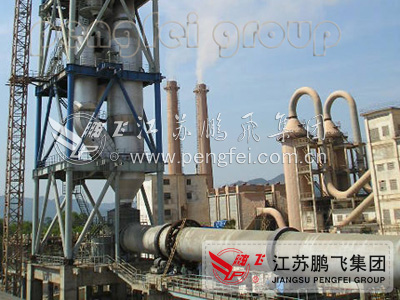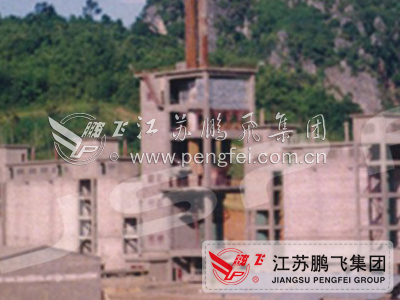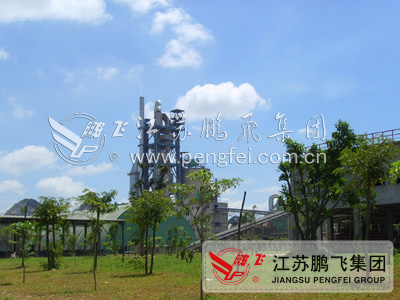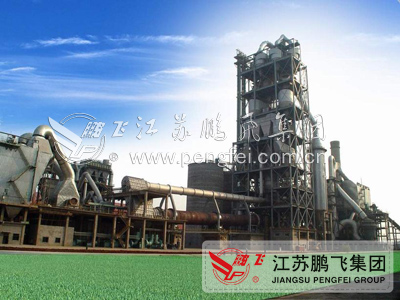A cement production line is a construction project consisting of a series of supporting equipment for producing cement. It mainly consists of crushing equipment, homogenization equipment, raw material preparation equipment, drying equipment, preheating and decomposition equipment, clinker burning equipment, cooling equipment, grinding equipment, packaging equipment, conveying equipment, environmental dust collection equipment, etc. Jiangsu Pengfei Group provides process design, civil construction, complete equipment, installation and commissioning, technical services, and engineering general contracting for cement production lines. A cement production line is a construction project consisting of a series of supporting equipment for producing cement. It mainly consists of crushing equipment, homogenization equipment, raw material preparation equipment, drying equipment, preheating and decomposition equipment, clinker burning equipment, cooling equipment, grinding equipment, packaging equipment, conveying equipment, environmental dust collection equipment, etc. Jiangsu Pengfei Group provides process design, civil construction, complete equipment, installation and commissioning, technical services, and engineering general contracting for cement production lines. A cement production line is a construction project consisting of a series of supporting equipment for producing cement. It mainly consists of crushing equipment, homogenization equipment, raw material preparation equipment, drying equipment, preheating and decomposition equipment, clinker burning equipment, cooling equipment, grinding equipment, packaging equipment, conveying equipment, environmental dust collection equipment, etc. Jiangsu Pengfei Group provides process design, civil construction, complete equipment, installation and commissioning, technical services, and engineering general contracting for cement production lines.
Process parameters
In the process of cement production line, for every 1 ton of Portland cement produced, 3 tons of materials (including various raw materials, fuels, clinker, mixtures, and gypsum) need to be ground. According to statistics, the power consumption of the dry cement production line grinding operation accounts for more than 60% of the total power consumption of the plant, of which raw material grinding accounts for more than 30%, coal grinding accounts for about 3%, and cement grinding accounts for about 40%. Therefore, reasonable selection of grinding equipment and process flow, optimization of process parameters, correct operation, and control of operating systems are of great significance for ensuring product quality and reducing energy consumption.
Production method
Cement production mainly uses limestone and clay as raw materials, which are crushed, proportioned, and vertically ground into raw materials. Then, they are fed into a cement rotary kiln to calcine the mature materials. The clinker is added with an appropriate amount of gypsum, mixed with some mixed materials or additives, and ground into cement by a roller press and cement mill. Finally, it is transported out of the factory by a packaging machine or bulk machine. Cement production equipment can be divided into two types: dry cement production lines and wet cement production lines, depending on the method of raw material preparation. (1) Dry process cement production process flow. The method of simultaneously drying and grinding raw materials, or first drying and grinding them into raw material powder, and then feeding them into a dry rotary kiln for calcination into clinker. There is also a method of adding an appropriate amount of water to the raw material powder to make raw material balls, which are then sent to the Libol kiln for calcination into clinker, called semi dry method, which is still one of the dry production methods. The main advantage of dry production is low heat consumption. The heat consumption of clinker in dry kilns with preheaters is 3140-3768 coke/kg. The disadvantage is that the raw material composition is not easily uniform, the workshop has high dust emissions, and the power consumption is high. (2) Wet cement production process flow. The method of grinding raw materials into slurry by adding water powder and feeding them into a wet rotary kiln to calcine mature materials. There is also a method of dehydrating the raw material slurry prepared by wet method and making raw material blocks into kiln calcined mature materials, called semi wet method, which is still one of the wet production methods. Wet production has the advantages of simple operation, easy control of raw material composition, good product quality, convenient slurry transportation, and less dust in the workshop. The disadvantage is high heat consumption, with clinker heat consumption usually ranging from 5234 to 6490 coke/kg.
The device includes
The main equipment of the cement production line includes: cement rotary kiln, cyclone preheater, cooler, crusher, vertical mill, roller press, cement mill, coal mill, dryer, dust collector, packaging machine, bulk loader, conveyor, electrical control, etc.
Process technology
Pre homogenization
(1) Crushing: In the process of cement production, most raw materials need to be crushed, such as limestone, clay, iron ore, and coal. Limestone is the largest raw material used in cement production, with a larger particle size and higher hardness after mining. Therefore, the crushing of limestone plays an important role in material crushing in cement plants.
(2) Pre homogenization of raw materials: Pre homogenization technology is the use of scientific stacking and retrieval techniques during the storage and retrieval of raw materials to achieve preliminary homogenization of raw materials, enabling the raw material yard to have both storage and homogenization functions. In the production process of new dry process cement, stabilizing the composition of raw materials is a prerequisite for stabilizing clinker burning, and the raw material homogenization system plays a role in stabilizing the composition of raw materials entering the kiln. Preheating and decomposition use a preheater to preheat and decompose cement raw materials, replacing some of the functions of the rotary kiln, shortening the length of the rotary kiln, and allowing the material to undergo gas to material heat exchange in a suspended preheating state within the rotary kiln. The raw materials are fully mixed with the hot gas discharged from the rotary kiln, increasing the contact area between the gas and materials, resulting in fast heat transfer speed and high heat exchange efficiency. This improves the production efficiency of the rotary kiln system and reduces the heat consumption of clinker burning.
(1) 80% of the raw materials dispersed and fed into the preheater pipeline undergo heat exchange in the inlet pipeline. Under the impact of high-speed rising airflow, the material bends and moves upward with the airflow, while being dispersed.
(2) Gas solid separation right: When the airflow carries the powder into the cyclone, it is forced to rotate and flow in the annular space between the cyclone body and the inner cylinder, and move downwards while rotating, from the cylinder to the cone, and can extend all the way to the end of the cone, then rotate upwards and rise, and be discharged through the exhaust pipe.
(3) The emergence of pre decomposition technology is a technological leap in cement calcination process. It is to add a decomposition furnace between the preheater and the rotary kiln, use the rising flue at the kiln tail, and install a fuel injection device, so that the exothermic process of fuel combustion and the endothermic process of carbonate decomposition of raw materials can quickly occur in a suspended or fluidized state in the decomposition furnace, increasing the decomposition rate of raw materials into the kiln to over 90%. Move the carbonate decomposition task that was originally carried out in the rotary kiln to the decomposition furnace; Most of the fuel is added from the decomposition furnace, with a small amount added from the kiln head, which reduces the heat load on the calcination zone inside the kiln, prolongs the life of the lining material, and is conducive to large-scale production; Due to the uniform mixing of fuel and raw materials, the combustion heat of the fuel is promptly transferred to the material, optimizing the combustion, heat exchange, and carbonate decomposition processes. Therefore, it has a series of excellent performance and characteristics such as high quality, high efficiency, and low consumption. After the raw materials are preheated and pre decomposed in the cyclone preheater, the next process is to enter the rotary kiln for clinker burning. In the rotary kiln, carbonate further decomposes rapidly and undergoes a series of solid-phase reactions, producing minerals such as minerals in cement clinker. As the temperature of the material increases, minerals will transform into a liquid phase, and those dissolved in the liquid phase will react to produce a large amount of clinker. After the clinker is burned, the temperature begins to decrease. Finally, the high-temperature clinker discharged from the rotary kiln is cooled by a cement clinker cooler to a temperature that downstream transportation, storage, and cement mills can withstand. At the same time, the sensible heat of the high-temperature clinker is recovered to improve the thermal efficiency and clinker quality of the system. Cement grinding is the final process of cement manufacturing and also the most power consuming process. Its main function is to grind cement clinker to the appropriate particle size, form a certain particle size distribution, increase its hydration area, accelerate the hydration rate, and meet the requirements of cement slurry setting and hardening. There are two shipping methods for cement packaging: bagged and bulk. The national standard requires that the proportion of bulk cement must reach 70% or more, and the development of bulk cement is a major trend in China.
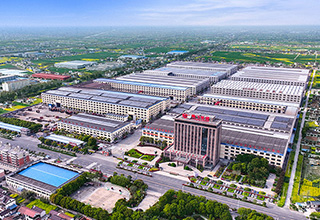
 Real time updates on cutting-edge information, presenting Pengfei and industry trends in a timely, comprehensive, and intuitive manner.
Real time updates on cutting-edge information, presenting Pengfei and industry trends in a timely, comprehensive, and intuitive manner.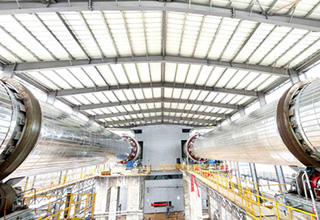
 We firmly believe that talent is the foundation of enterprise development. We adhere to the talent concept of "people-oriented, co creation and win-win", respect the personality and creativity of each employee, and are committed to providing employees with broad development space and a fair competitive platform.
We firmly believe that talent is the foundation of enterprise development. We adhere to the talent concept of "people-oriented, co creation and win-win", respect the personality and creativity of each employee, and are committed to providing employees with broad development space and a fair competitive platform.
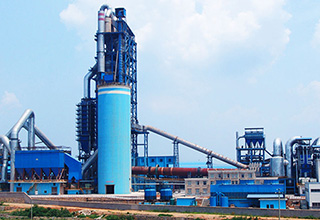

 中文
中文 English
English
